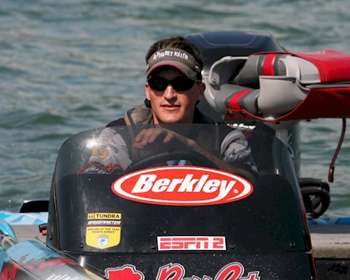
When it comes to smallmouth fishing on large bodies of water across the northern United States, few tactics have proved as consistently effective as the tube jig. Elite Series pro and New York native Matt Sphar has some tips when it comes to dragging these offerings across the bottoms of northern lakes.
Sphar starts "dragging a tube" during the prespawn and will continue to ply the technique through fall. "The big smallmouth really gorge themselves on crawfish and gobies during the spring, so the tube is really effective then," he says. "You can catch them on a tube year-round, though, as long as you stay around the rock and gravel bottoms."
Regardless of the season, bottom contact is critical for success when dragging a tube. "You have to be able to feel that tube ticking the tops of the rocks when you're drifting. If you're not feeling that, you either have too much line out or your weight is the wrong size," explains Sphar. "It's a really fine line to get it right."
Inside the tube, Sphar inserts a tube weight ranging from 1/4 ounce to 1/2 ounce, depending on the water depth and wind velocity. He uses the lightest weight possible while still keeping contact with the bottom.
While a plethora of tubes are available in sizes from 2 to 6 inches in length and various diameters, Sphar almost exclusively uses a 3 1/2-in Bass Pro Shops Tender Tube for dragging on lakes like Ontario, Erie, and Champlain. "I don't particularly like the fat tubes because they have too much drag (resistance) in the water and I can't feel them on the bottom," he says. The Tender Tube gas has a small diameter and allows Sphar to feel what his bait is doing as it meanders across the bottom.
Sphar sticks with natural hues but will vary them depending on water color, light penetration, and the dominant forage. "You really have to pay attention to water color because crawfish will change colors depending on the water color and sunlight," he explains. On sunny days, Sphar opts for a green pumpkin tube. When it is overcast, Sphar favors a watermelon tube because "the water and cover turns a darker green color when the sun isn't brightening the water."
While he will continue to fish a tube in overcast conditions, Sphar says that the biggest bass usually bite when he is dragging a tube under bright skies. "It seems to make the bass more active. As long as there is a decent amount of wind, it will keep the baitfish and the smallmouth tighter to the bottom," he states.
According to the New York pro, the only thing that will kill a tube bite is flat water. When the wind dies, the baitfish will rise off the bottom and suspend, causing the smallmouth to follow suit. "That's when it gets tricky because if you're dragging a tube in flat water, you're probably fishing way below where the bass are holding," says Sphar. "When it's calm, you won't catch nearly as many."




